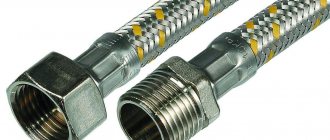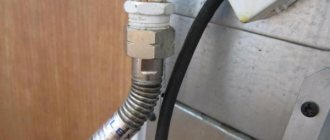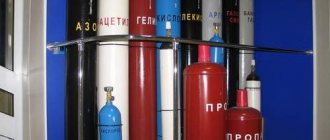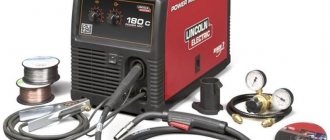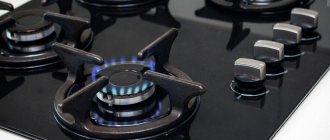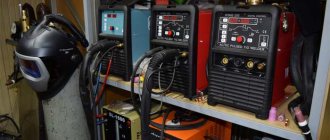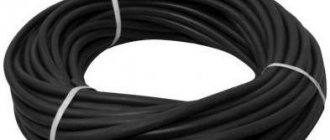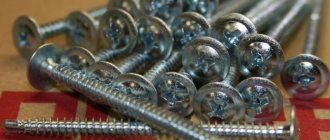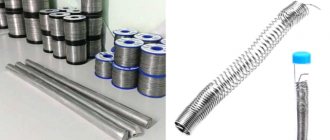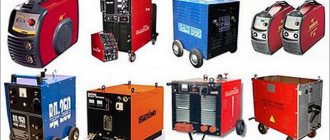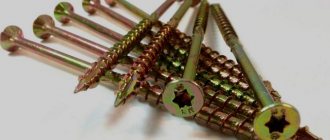Since the appearance of the first gas appliances and until recently, they were connected only with steel pipes.
Now everything has changed dramatically: flexible gas hoses have become firmly established in everyday use, and have already managed to practically displace their outdated predecessors. They are much more convenient to use, easier and faster to connect to the main line.
Don't know what type of hose to choose from the range offered on the market? Let's figure it out together - the article discusses the main types of products used for gas connections, highlighting their advantages and disadvantages.
We also provide useful recommendations for choosing the best flexible eyeliner option. The material is supplemented with video tips and visual photos depicting hoses made of various materials.
Types of gas hoses
There are many models of moving joints on the market. Among them, there are three main types of modern hoses for gas supply: rubber-fabric, reinforced, and bellows.
In the process of their production, different materials are used, which differ in technical characteristics, operating conditions and service life. Each type of product has both pros and cons. Which gas hose is best to choose depends on the specific situation, installation location, and household appliance.
Type #1 - products made of rubber and fabric
Rubber-fabric hoses are the simplest and cheapest option. These are soft rubber sleeves reinforced with durable textile thread. They are quite unpretentious to use.
The rubber from which the hoses are made is supplemented with elastic components that extend the service life up to 5 years. The material does not conduct electricity and bends well. However, over time it begins to crack, which is fraught with possible gas leaks.
Rubber-fabric tubes must be marked with a yellow sticker. This means they are designed for gas, not water.
Advantages of rubber products: affordable cost and quick installation, flexibility and excellent electrical insulation, availability of numerous models of different diameters and sizes.
But there are also disadvantages:
- high sensitivity to mechanical stress;
- minimal protection against temperature changes;
- insufficient rigidity.
This type of eyeliner is characterized by a high degree of danger. Even dielectric abilities cannot prevent the natural wear of rubber.
It is allowed to be connected only to gas cylinders, but subject to replacement every two years in order to prevent unpleasant consequences. Several brands of rubber hoses have positive reviews: IndustriasMateu, GasLink, Kuzuflex.
Type #2 - rubber hoses with metal braid
This variety is a reinforced sleeve made of vulcanized rubber, braided on the outside with steel threads. The internal part is made of polymer materials.
The polymer placed in the middle is subject to destruction and destruction in the same way as rubber. In addition, steel serves as a conductor of electricity.
When using metal braided tubes, you must remember to turn off the gas taps. This measure extends the service life of the reinforced product.
When connecting such hoses, it is necessary to use additional dielectric inserts, placing them between the connection and the household appliance.
Product advantages:
- low price;
- ability to withstand high temperatures (up to 50 degrees);
- ease of installation and operation.
Disadvantages include the questionable reliability of internal polymer connections and the low level of electrical insulation.
Gas reinforced devices are easily distinguished from water ones by the color of the outer braid threads: they are usually marked yellow, and their water counterparts are red and blue. At the moment, the brands Ecoflex, GAS-FLEX, Fado are in demand.
Type #3 - bellows gas hoses
Flexible bellows-type devices are recognized as the most practical and safe type of gas supply. These are sealed sleeves made of stainless steel and polymer materials, reinforced with corrugation that follows the shape of a ring or screw. It contains a wire that can withstand high pressure.
At the ends of the products, fittings made of brass or carbon steel with threads, equipped with gaskets, are installed. Such elements are necessary for direct connection to the equipment.
According to manufacturers, flexible bellows lines are made by analogy with the structure of the human intestine. That is why they change sizes freely. By repeatedly bending, stretching and becoming significantly longer, the hoses do not lose their original elasticity, strength and performance.
In practice, it is not recommended to stretch the product by more than 50 percent of the original length, since this negatively affects its rigidity.
Reinforced elements are practically not subject to mechanical defects and the influence of aggressive detergents, and are protected from stray currents. The unique corrugation design compensates for the expansion and contraction of the metal during heating and cooling
Simple models are presented in the form of a corrugated hose with a round cross-section, more advanced ones are protected by a special metal sleeve, and there are also products with a polymer coating.
You can also consider a modernized version - hoses equipped with a thermal protection valve that cuts off gas when the temperature rises critically. Corrugated tubes are produced in a characteristic bright yellow color.
Their main advantages:
- reliability and safety;
- flexible but rather dense structure;
- withstands a wide range of operating temperatures (-50…+250);
- resistance to high pressure (up to 6 atmospheres);
- possibility of extension twice;
- durability (service life about 30 years);
- compatibility with any gas equipment and fittings.
Professional gas fitters believe that this type of hose most closely matches European standards and is best suited for modern gas systems. But they have one significant drawback - high cost.
Corrugated tubes are often connected in open areas where devices constantly experience cyclic temperature changes. Trusted manufacturers of bellows hoses: Hydrosta, LAVITA, EMIFLEX, TuboFlex, Ayvaz.
View #4 - oxygen hoses
There is another type of gas connections - oxygen hoses. They are relatively inexpensive, have high strength, and can withstand high pressure (up to 20 atmospheres).
However, experts strongly do not recommend installing an oxygen hose in an apartment. Nowadays it is rarely found on new equipment.
Oxygen hoses have one significant drawback: they cannot serve as permanent hoses for supplying gas to the devices and equipment used.
An oxygen hose is used as a temporary connection option, for example, at the dacha to connect a gas cylinder. In this case, do not forget to purchase a gas reducer to ensure the safety of using the cylinder.
For any gas appliance, you should use connections only with appropriate markings confirming that a particular device is intended specifically for gas. It is prohibited to use water hoses when connecting geysers or stoves.
Flexible gas supply - installation rules
It is not recommended to connect the gas stove yourself. The gas is explosive and the slightest leak can lead to irreversible disaster. Soap solutions, which amateurs used to check for leaks in the past and now, have long been out of date.
Each gas technician who connects the stove to the gas pipeline has highly sensitive electronic gas detectors. If it is still not possible to call a specialist to connect gas-consuming devices to the main line and the work is carried out with your own hands, you should follow the following rules:
- To connect gas stoves, special flexible connections with a yellow stripe are used. Rubber and polyvinyl chloride products must have a tag indicating the manufacturer and date of manufacture.
- The permissible length of the hose should not exceed 4 m. If the distance is too large, a metal pipeline of the required length is welded to the main line, to which the liner is then screwed.
- The hose must be solid; it must not be laid from two joined sections of any type of connection.
- The flexible gas connection purchased must be of such length that it can be positioned in a free-hanging position without tension.
- When installing the stove, free access to the hose must be ensured. This is necessary for visual inspection of it for possible damage and cracking.
- Some users are not happy with the appearance of black rubber or yellow eyeliners and try to take steps to change their color. Under no circumstances should the sleeve be painted, only covering it with various films is permissible.
- When installing metal bellows connections, it is necessary to take measures to electrically isolate them from the plate (connection via a dielectric coupling). Otherwise, stray currents may damage the corrugated casing, causing dangerous leakage.
Features of choosing the best hose
It is advisable to purchase hoses for supplying gas to household equipment in specialized stores that can provide a quality certificate for each product.
The range includes models of different lengths. It is selected so that in the future you do not have to connect several tubes to each other.
The most commonly used tubes are 1, 1.5 and 2 meters. This reduces the risk of line ruptures and, accordingly, increased danger for apartment residents. If the length is not enough, the supply is supplemented with a metal pipe.
Another important indicator is the cross-section diameter. The minimum value that will ensure good cross-country ability and full gas supply to the device is 10 mm.
The ends of the hoses are equipped with two nuts or one nut and a fitting. The nut has an internal thread, the fitting has an external thread. The thread is selected in accordance with the outlet on the household appliance. If the outlet is direct, then a special fitting-angle is used.
Professionals advise buying hoses with sufficient length (sleeves up to 4.5 meters are available for sale). This approach will allow you to choose any convenient place for the equipment and simplify installation, freely performing the installation without excessive tension
An ordinary rubber-fabric hose will do as a budget option. When choosing this product, you need to carefully monitor the degree of wear.
If the slightest cracks, damage or smell of gas is detected, replace it in a timely manner. When looking for an offer that would optimally combine price and quality indicators, it makes sense to focus on reinforced hoses.
In order for the gas to reach all burners on the stove in the required volume, the diameter of the gas hose must be at least 10 mm. The bigger it is, the better
If finances allow, it is better to take a bellows hose. It is recognized as the safest and most reliable device - officially approved for use with household appliances by city gas services.
When choosing it, you need to check the type of connection. Its quality directly affects the durability of the product. It is not advisable to take models in which the fitting is connected to the corrugation using glue. It is more advisable to find a solid or welded structure.
With metal braid
It has an optimal ratio of price, quality and durability. Price from 140 rubles per 60 cm of finished product. The hose is made of vulcanized rubber and reinforced with textile thread. The outer part is a metal braid.
One of the most common options, the popularity of which is associated with many positive qualities, including:
- high level of reliability;
- ease of installation;
- longer service life compared to rubber products;
- large selection of lengths and diameters;
- permissible temperature has a wide range from -35 to + 50 degrees;
- ease of use.
Gas services often recommend replacing old metal-braided hoses due to the inability to check the condition of the rubber under the braid. If it is impossible to confirm the relevance of the product’s service life by the passport, then I recommend replacing the eyeliner with a bellows or reinforced PVC one.
Reliable signs of a fake
Regardless of the type of flexible gas hose, you should ensure the authenticity of the product before purchasing. The fact is that recently cases of defects and counterfeits launched for sale by Chinese manufacturers have become more frequent.
Well-known European brands are usually the targets of counterfeiting. The difference in quality between the original and the fake can be colossal.
It is possible to play it safe and distinguish a quality product from a counterfeit one.
To do this you need:
- take the time to conduct a thorough visual inspection;
- check whether the technical characteristics correspond to those indicated in the product passport;
- require the seller to present quality certificates confirming the safety of the device intended for working with explosive substances;
- do not buy goods at a suspiciously low price, which is not typical for products in this category.
The structure of counterfeit goods may contain dangerous chemical or radioactive impurities. Defective hoses are short-lived and often cause explosions.
Classification of classes, parameters and sizes of oxygen hoses
Currently, 2 classes of special products are produced, in the form of a simple sleeve or as a multifunctional cable complete with a gas burner. The latter are universal in purpose and are equipped with: a hose with a built-in welding gun-torch and a special connecting connector. This kit is suitable for a semi-automatic process that requires the wire to be fed to the processing site along a guide channel with a compressed spiral. The inner surface of which is usually strengthened to protect the structure with a special tube made of wear-resistant materials, such as Teflon.
In addition to the traditional single-channel transmission method, the hoses can also operate according to the parallel supply principle. In this case, several channels are placed simultaneously in one coaxial cable. The permissible length of welding hoses is from 8.0 to 20.0 m; it is prohibited to use hoses shorter than 9.0 and longer than 30.0 meters during work. Certain tolerances for increasing the length are allowed for large slip structures up to 40 m, and above 40 m, a special permit for work will be required in the presence of the person responsible for safety.
It is permissible to lengthen the sleeves with nipples made of steel or brass, while in order to avoid breakdown and leaks, the sleeves with nipples are additionally secured with soft types of wire. The length of the connecting sections cannot be less than 3 m. It is prohibited to use smooth-bore tubes to connect structures.
Before connecting the hoses with the cutter, they must be purged with working media: oxygen, respectively, O2, and propane, with propane. During the welding process, it is prohibited to pull the hoses or step on their sections and place them near an open fire or a high-temperature source. They must also be protected from sparks. Upon completion of the process, the hoses are carefully collected onto the reel and placed on fastenings or placed in a place specially prepared for storage.
Characteristics
The bellows connection for gas 1/2 has the following operational and physical parameters:
- Withstands pressure in the line from 6 to 11 bar (depending on the wall thickness), which is 200 - 400 times more than the nominal gas pressure in the network of communal and private houses, which is 0.03 bar.
- Standard hoses are designed for ambient temperatures from -50 to +130 °C. Stainless steel itself can withstand temperature loads up to + 200 °C, that is, theoretically it can remain in the flame of a gas burner for some time without any damage.
- Diameters of a typical corrugated bellows sleeve: internal 12.4 mm, external 17.1 mm.
- The bending radius of the hose along the inner shell is at least 35 mm.
- The service life of bellows-type liners is at least 10 years, in practice it can reach up to 30 years. Reliability, durability and tightness of the connection of the corrugated pipeline with fittings is ensured by their argon-arc welding in an inert gas environment.
Rice. 3 Physical and operational characteristics of La Flex gas connections
Related article:
Bellows water line: basic parameters, selection and connection . The article describes in detail what a bellows liner for water is, what types there are, where they are used, and technical characteristics. Read it, it might be interesting.
